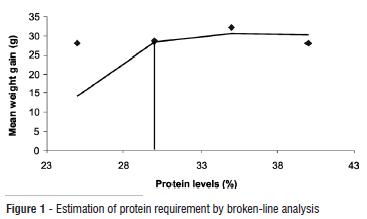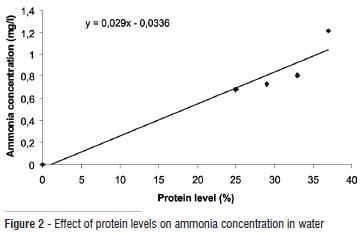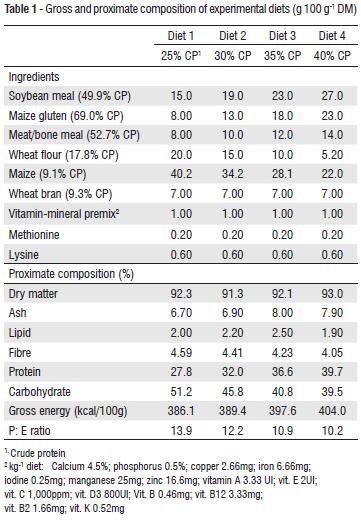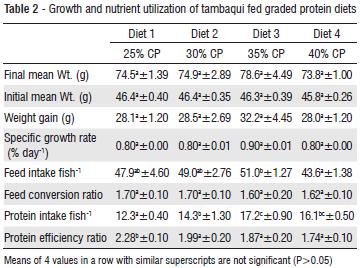Fish meal free diets were formulated to contain graded protein levels as 25% (diet 1), 30% (diet 2), 35% (diet 3) and 40% (diet 4). The diets were fed to tambaqui juveniles (Colossoma macropomum) (46.4 ± 6.3g) in randomly designed recirculating systems for 60 days, to determine the optimum protein requirement for the fish. The final weight of the fish, weight gain (28.1, 28.5, 32.2, 28.0g) and specific growth rate increased (P>0.05) consistently with increasing dietary protein up to treatment with 35% protein diet and then showed a declining trend. Feed intake followed the same trend resulting in best feed efficiency (62.5%) in fish fed diet with 35% protein. Similarly, the protein intake increased significantly with increasing dietary protein levels and reduced after the fish fed with 35% protein; while protein efficiency ratio (2.28, 1.99, 1.87, 1.74) decreased with increasing dietary protein levels. Carcass ash and protein had linear relationship with dietary protein levels while the lipid showed a decreasing trend. Ammonia content (0.68, 0.73, 0.81, 1.21 mg L-1) of the experimental waters also increased (P<0.05) with increasing protein levels while pH, dissolved oxygen and temperature remained fairly constant without any clear pattern of inclination. Broken-line estimation of the weight gain indicated 30% protein as the optimum requirement for the fish.
Tambaqui; protein requirement; fish meal free diets






